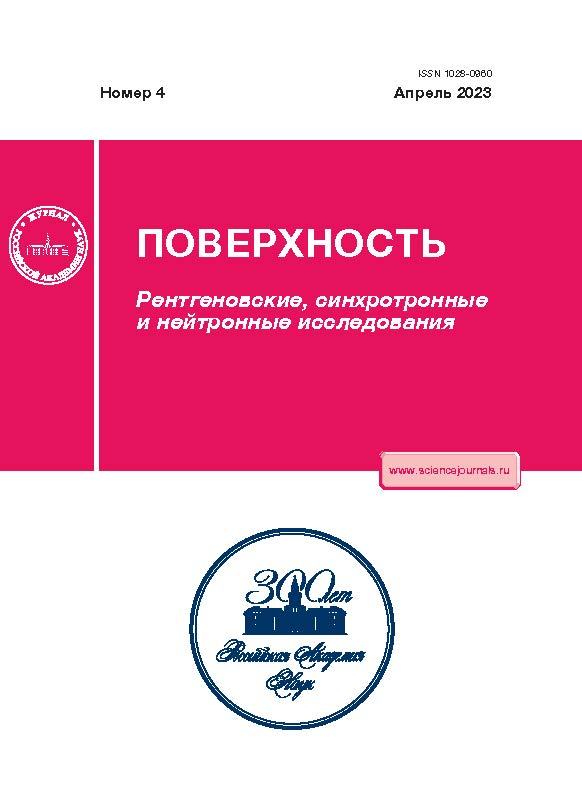Focused Ion Beams and Complementary Techniques for Study of the Silvering of Ancient Roman Coins
- Authors: Sozontov E.A.1, Greshnikov E.A.1, Trun’kin I.N.1, Pakhunov A.S.2, Govor L.I.1, Kurkin V.A.1
-
Affiliations:
- National Research Centre “Kurchatov Institute”
- Institute of Archaeology, Russian Academy of Sciences
- Issue: No 4 (2023)
- Pages: 107-112
- Section: Articles
- URL: https://rjmseer.com/1028-0960/article/view/664587
- DOI: https://doi.org/10.31857/S1028096023040180
- EDN: https://elibrary.ru/JMZINQ
- ID: 664587
Cite item
Abstract
Two ancient Roman silver coins dating back to the 3rd–4th century AD were studied. A set of modern micro- and non-invasive analytical techniques was used: a focused ion beam, scanning electron microscopy, energy dispersive X-ray microanalysis, micro-X-ray fluorescence analysis, neutron radiation analysis, and other methods. The research showed that Ag–Cu and Ag–Cu–Pb–Sn alloys were used, common in the prosperous years of the Roman Empire, when the Romans produced alloys with a relatively high silver content for both outer layers and the inner core of the coins. Surface silvering processes were used during different periods of crisis under the reign of Antoninii. It was established that even during the crisis, the Romans produced high quality “Antoninianus”, attempting to improve the silvering procedure using silver amalgam (Hg–Ag) – mercury was detected in the near-surface silver layer of the coins. A porous morphology of the coin surface was also revealed, which might be the result of an uncontrolled heating process and the removal of mercury through boiling.
About the authors
E. A. Sozontov
National Research Centre “Kurchatov Institute”
Author for correspondence.
Email: esozontov@yahoo.com
Russia, 123182, Moscow
E. A. Greshnikov
National Research Centre “Kurchatov Institute”
Email: esozontov@yahoo.com
Russia, 123182, Moscow
I. N. Trun’kin
National Research Centre “Kurchatov Institute”
Email: esozontov@yahoo.com
Russia, 123182, Moscow
A. S. Pakhunov
Institute of Archaeology, Russian Academy of Sciences
Email: esozontov@yahoo.com
Russia, 117292, Moscow
L. I. Govor
National Research Centre “Kurchatov Institute”
Email: esozontov@yahoo.com
Russia, 123182, Moscow
V. A. Kurkin
National Research Centre “Kurchatov Institute”
Email: esozontov@yahoo.com
Russia, 123182, Moscow
References
- Vasiliev A., Kovalchuk M., Yatsishina E. // Crystallogr. Rep. 2016. V. 61. № 6. P. 873. https://doi.org/10.1134/S1063774516060183
- Artioli G., Scientific Methods and Cultural Heritage: An Introduction to the Application of Materials Science to Archaeometry and Conservation Science. N.Y.: Oxford University Press, 2010. https://doi.org/10.1093/acprof:oso/9780199548262. 001.0001
- Зограф А.Н. Античные монеты. МИА. Вып. 16. М.: Изд-во АН СССР, 1951. 264 с.
- Мэттингли Г. Монеты Рима, Collector’s Books, 2005. 316 с.
- Гума В.И., Демидов А.М., Иванов В.А., Миллер В.В. Нейтронно-радиационный анализ. М.: Энергоатомиздат, 1984. 64 с.
- Демидов А.М., Говор Л.И., Черепанцев Ю.К., Ахмед М.Р., аль-Наджар С., аль-Амили М.А., аль-Ассафи Н., Раммо Н. Атлас спектров гамма-излучения от неупругого рассеяния быстрых нейтронов реактора. М.: Атомиздат, 1978. 328 с.
- Pakhunov A., Greshnikov E., Sozontov E., Trun’kin I., Govor L. // LXX1 Int. Conf. “NUCLEUS 2021. Nuclear Physics and Elementary Particle Physics. Nuclear Physics Technologies”. Book of Abstracts / Ed. Kovalenko V.N. and. Andronov E.V. Saint Petersburg, Russia, 20–25 September 2021. P. 351.
- http://www.ric.mom.fr/en/info/sysmon#haut
- Vlachou C., McDonnell J.G., Janaway R.C. // Mat. Res. Soc. Symp. Proc. 2002. V. 712. P. II9.2.1.
- Anheuser K. // Materials Issues in Art and Archaeology V / Ed. Vandiver P. et al. Massachusetts: Materials Research Society, 1997. V. 462. P. 127.
- Oddy W.A. // Gilded Metals. History, Technology and Conservation / Ed. Draymann-Weisser T. London: Archetype Publications Ltd., 2000. P. 1.
- Cope L.H. The Metallurgical Development of the Roman Imperial Coinage during the First Five Centuries A.D. PhD Thesis, Liverpool Polytechnic, 1974.
- Cope L.H. // Methods of Chemical and Metallurgical Investigation of Ancient Coinage / Ed. Hall E.T., Metcalf D.M. London: Royal Numismatic Society, 1972. P. 261.
- George N. // Debasement: Manipulation of Coin Standards in Pre-Modern Monetary Systems / Ed. Butcher K. Oxford: Oxbow Books, 2020. P. 75.
- La Niece S. // The Antiquaries J. V. 70. Iss. 01. P. 102. https://doi.org/10.1017/S0003581500070335
- Domenech-Carbo M-T., Di Turo F., Montoya N., Catalli F., Domenech-Carbo A., De Vito C., // Sci. Rep. 2018. V. 8. P. 10676. https://doi.org/10.1038/s41598-018-28990-x
Supplementary files














